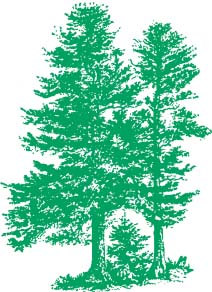Moose Are Roaming Right Out of Existence
In the Upper Midwest, the animals are dying off in startling numbers. Biologists blame global warming.
by Tim Jones
December 29, 2008
Los Angles Times
Reporting from Chicago -- It wasn't long ago that thousands of moose roamed northwest Minnesota. But in two decades, the number of antlered, bony-kneed beasts from the North Woods has plummeted from 4,000 to fewer than a hundred.
They didn't move away. They just died.
The primary culprit, scientists say, is climate change, which has systematically reduced the Midwest's already dwindling moose population and provoked alarm in Minnesota, where wildlife specialists gathered for a "moose summit" this month in Duluth.
"There's not a lot of opportunity to turn this around," said Mark Lenarz, a wildlife research specialist at the Minnesota Department of Natural Resources.
Temperatures tell much of the story. Over the last 40 years in northwest Minnesota, the average winter temperature has risen significantly -- 12 degrees -- and summers are 4 degrees warmer.
Solitary and grumpy, moose have made it clear in their estimated 13,000 years in North America that they hate warm weather.
The concern about the fate of the moose comes as the Bush administration, in its last weeks, is revising regulations in ways that prohibit federal agencies from evaluating the effects of increased global warming on endangered species.
Officially, the moose is not endangered in the U.S. But it is in danger of disappearing from the Midwest, which is the far southern fringe of its range. There are about 7,700 moose in Minnesota, nearly all in the northeast part of the state. That's down about 50% from 20 years ago.
Isle Royale National Park, a 45-mile-long island in western Lake Superior, has about 650 moose, down from 2,500 in 1995. Michigan's sparsely populated Upper Peninsula has about 450, and that population has remained steady, said a wildlife biologist at the Michigan Department of Natural Resources.
"The trends for the past 20 years are pretty clear, and if they keep up there won't be any moose in 50 years," said John Vucetich, a population biologist at Michigan Technological University in Houghton.
It's not as if the moose dying off in Minnesota and Michigan would upset a delicate ecological balance in the way that, for example, a dramatic falloff of the bird population would allow insects to proliferate.
"As the climate warms, some creatures will do better, some worse. For moose, it's fairly straightforward that we'll lose them . . . and there are a lot of people who identify with moose," Vucetich said.
That identity, including wood carvings and giant polystyrene moose next to roadside restaurants, helps define the region's image.
"They're a symbol of the great north, of wilderness, and a lot of people would not want to see that go away," Vucetich said.
Minnesota and Michigan offer separate laboratories that help explain why the moose are dying. Heat, water and parasites play important roles, but temperatures are the trigger.
Whereas deer, wolves and bears have adapted to warmer temperatures, wildlife biologists say, moose have suffered. Moose require shade, water and cool weather, each of which is dwindling in northwest Minnesota, where the moose population struggles among small patches of aspen woods and farmland.
When temperatures rise, the moose have to work harder to obtain food and find places to stay cool. Lenarz said that affects their immune systems, prevents them from putting on more fat in the summer (which they need to get through the winter) and makes them vulnerable to parasites.
Although northeastern Minnesota is comparatively more moose-friendly -- greater shade, more opportunities to cool off -- the population is declining about 10% a year. Lenarz said the pregnancy rate was a little more than half the norm for moose, and mortality rates are two to three times the average.
Heading north to cooler climes is not an option.
"When moose are in trouble, they don't move. They die," said Rolf Peterson, a research professor at Michigan Tech and chairman of the Minnesota Moose Advisory Committee. Peterson has spent decades studying the relationship between moose and wolves, the only big animals on Isle Royale.
Moose on the isolated island are not exposed to many of the threats from Minnesota -- cars, hunters and parasites usually carried by deer. Wolves are the predators. But a decadelong trend of hotter-than-normal summers, according to a report issued in March, has negatively affected moose.
The summer of 2007 was the driest of the last 45 years, the report said.
"I don't see the temperature change we're seeing as cyclical. The trend is definitely in one direction," Peterson said.
tmjones@tribune.com
